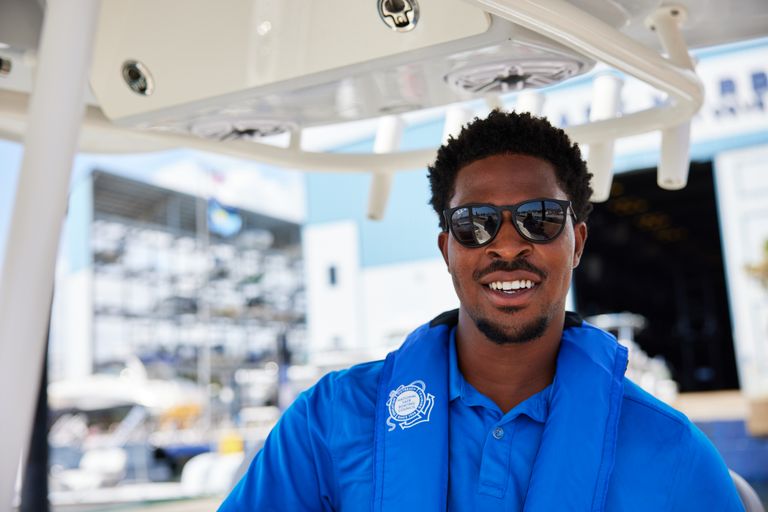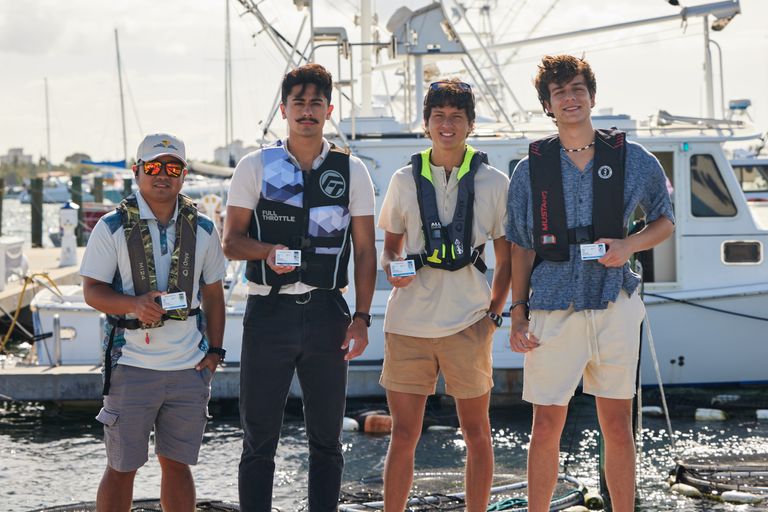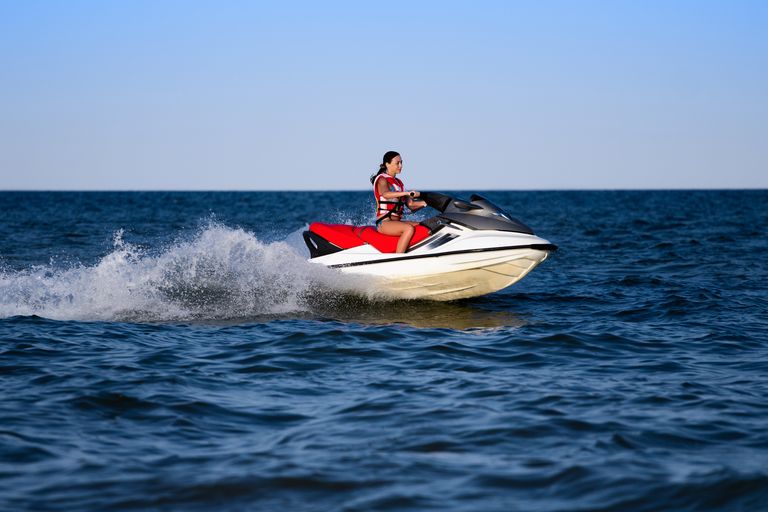Boating With a Dog: How to Protect Your Pups on the Water
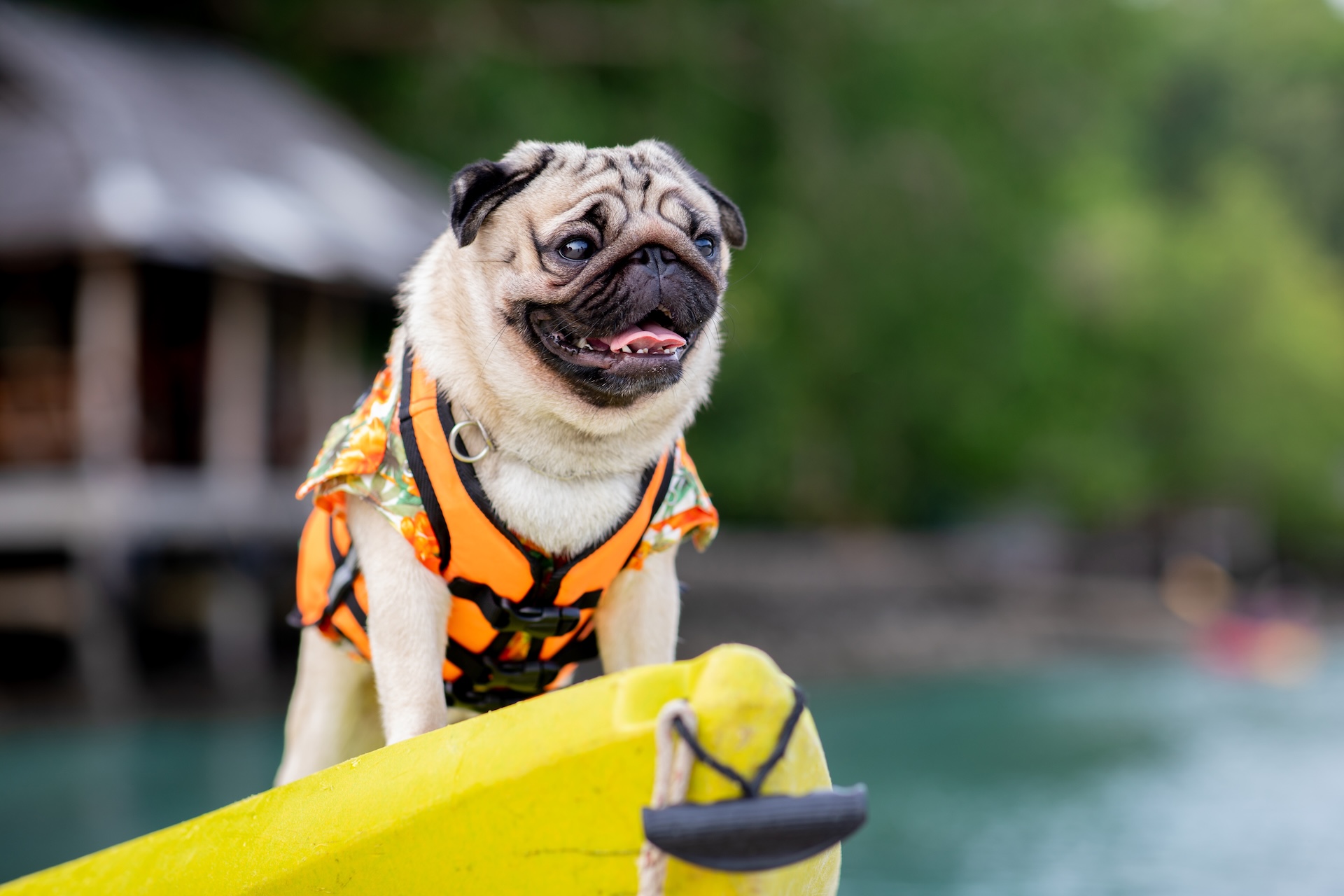
If you're like many other boaters, you know a day on the water isn't complete without your four-legged family member. Whether you are cruising, fishing, or relaxing, boating with a dog can make for a memorable day. However, it's important to remember that plenty of safety precautions exist to protect your pup and everyone on the boat, including having the proper safety equipment on board.
Additionally, dogs can face serious risks on boats, including accidental falls, overheating, and drowning. Here's how to keep your furry companion safe and happy while on the water together.
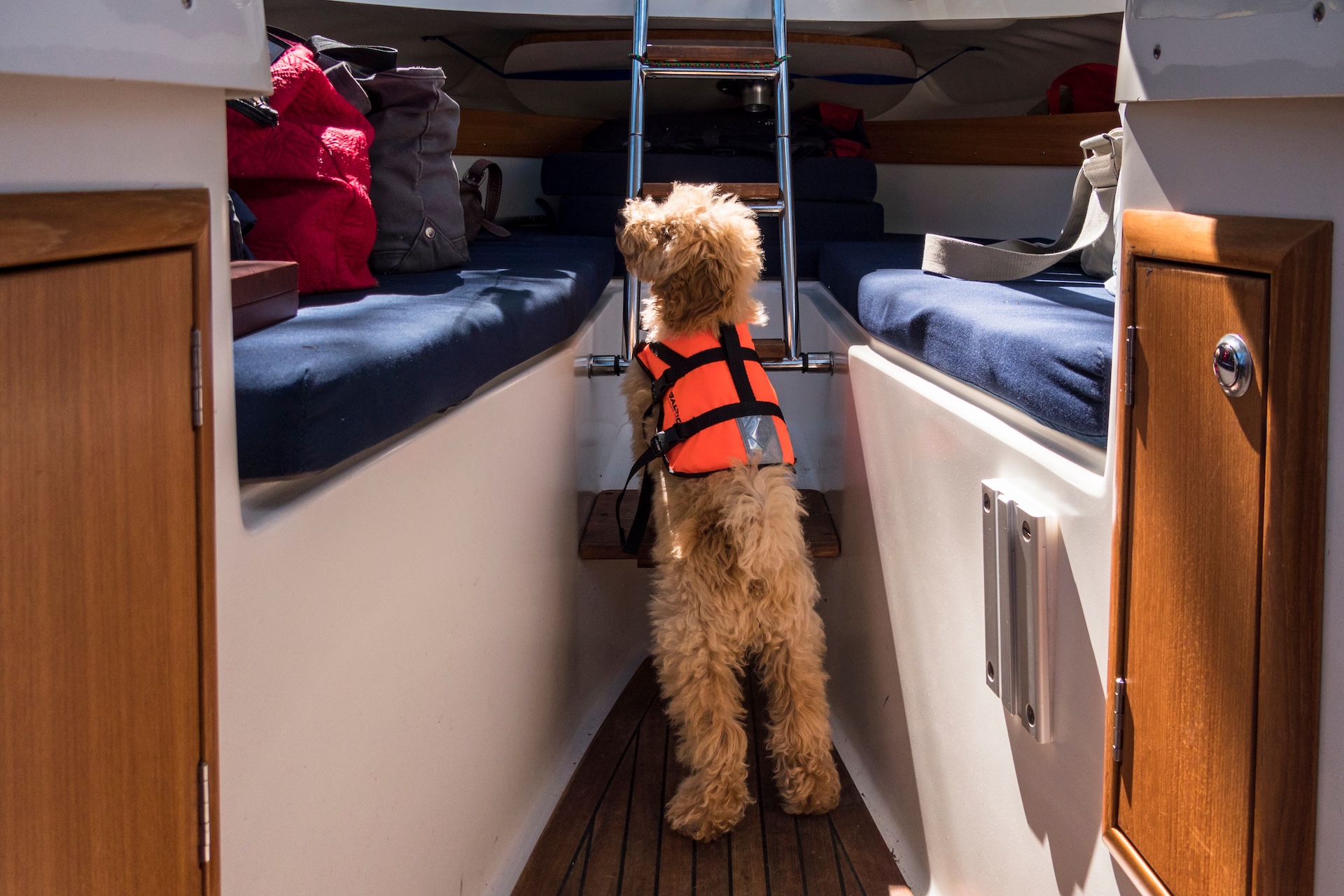
Do Dogs Need Life Jackets on Boats?
While a life jacket isn't required for your dog, it's a great idea.
Not all dogs are natural swimmers, and some breeds, such as bulldogs and pugs, struggle in the water. Even a dog that's a good, strong swimmer can get tired, get caught in a current, or face an emergency.
Choosing a well-fitted dog life jacket with a top handle lets you keep your dog afloat and lift them back onto the boat more easily. Select a life jacket with reflective stripes and bright colors to improve visibility, making it easier to spot your dog in the water if they swim away from your vessel.
Dog Boating Safety Tips
To help your dog prepare for your boating adventures, start by acclimating them to the vessel. Do that by letting them explore the boat while it's docked so they can get more comfortable.
Also, make sure you have a plan for overboard incidents. Teach your dog how to return to the boat with a dog-friendly ladder or ramp.
Look at the boat and make sure it has enough shade for your dog to get into. You'll also want to bring plenty of fresh water for hydration, as shade and water protect your dog from overheating.
Remember that your dog won't understand hazards like you do, so keep ropes, sharp objects, and fishing hooks out of reach. Choose non-slip flooring to get your dog some traction on wet surfaces, and make sure you know and understand the local laws regarding pets on boats. Some locations have stricter rules than others.
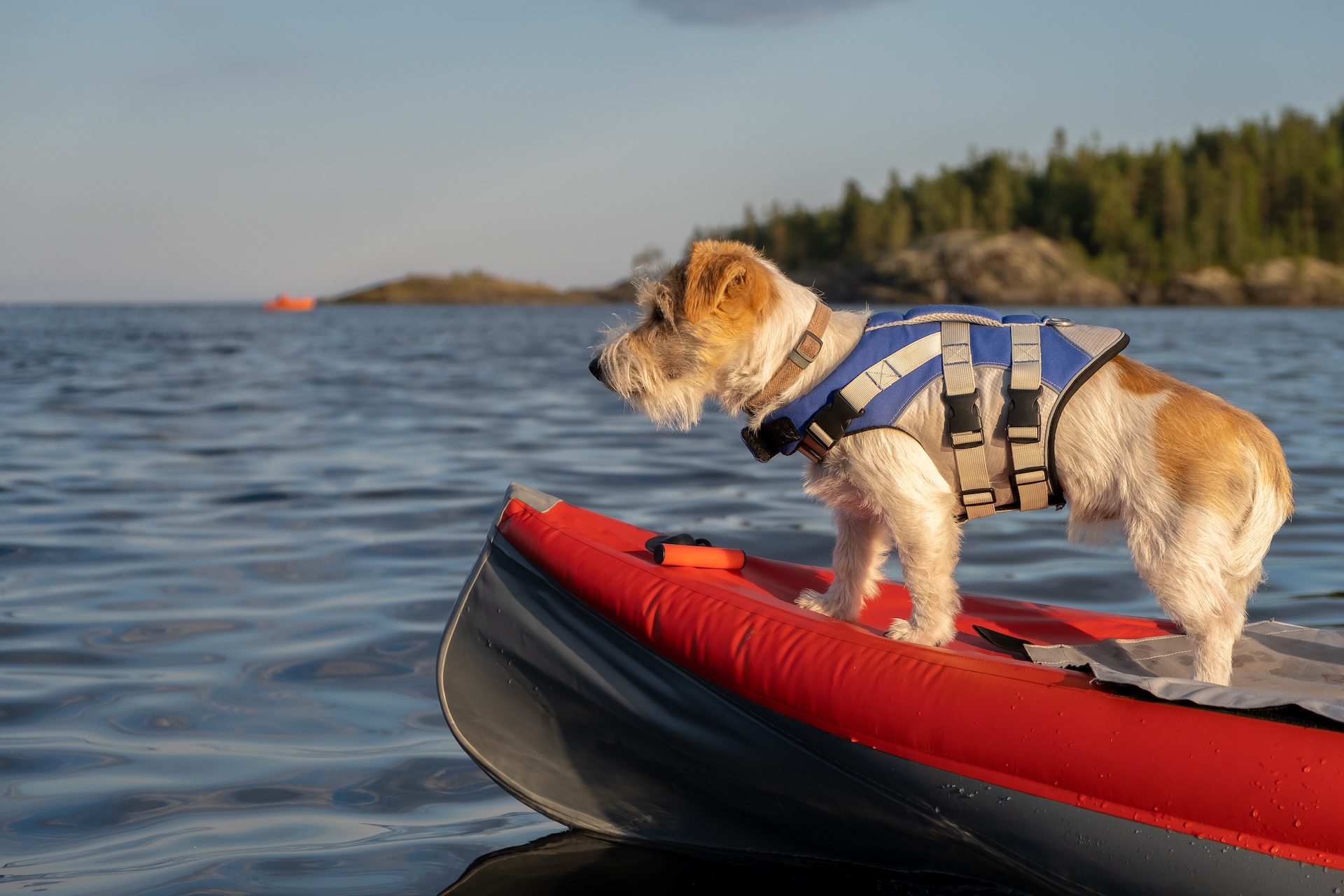
What to Do in an Emergency When Boating with a Dog
Even with the best precautions, emergencies can happen. Knowing how to react quickly and effectively when boating with your dog can make all the difference.
Here are some of the most common boating emergencies with your pup and what you should do to navigate the situation successfully.
If Your Dog Falls Overboard
A dog that falls overboard can panic, and if you also panic, that can increase their anxiety.
Stay calm and follow these steps:
- Cut the Engine: This prevents your dog from getting caught in the propeller as the boat moves past them in the water.
- Call your Dog: If they're trained to respond to commands, you can encourage them to swim toward you.
- Use a Dog Rescue Device: A dog-specific ramp, floating leash, or boat ladder can help them climb back onto the boat.
- Grab the Life Jacket Handle: If your dog is wearing a life jacket with a handle, use it to lift them back onto the boat.
Which of these options works for your specific situation depends on the details of what happens, such as the size of your dog, whether they're wearing a life jacket, and their ability to swim back to your vessel.
If Your Dog Shows Signs of Heatstroke
Dogs can overheat quickly on the water, especially in direct sunlight. Look for signs like excessive panting, drooling, or lethargy.
If you see these symptoms, it's time to:
- Move them to a shaded area immediately.
- Offer fresh, cool water (never saltwater).
- Wet their fur with cool (not cold or icy) water.
- Use damp towels on their paws, belly, and neck to help lower body temperature.
These actions can help protect your dog and prevent further damage from the heat. If their symptoms don't improve quickly, get them to shore and seek veterinary help.
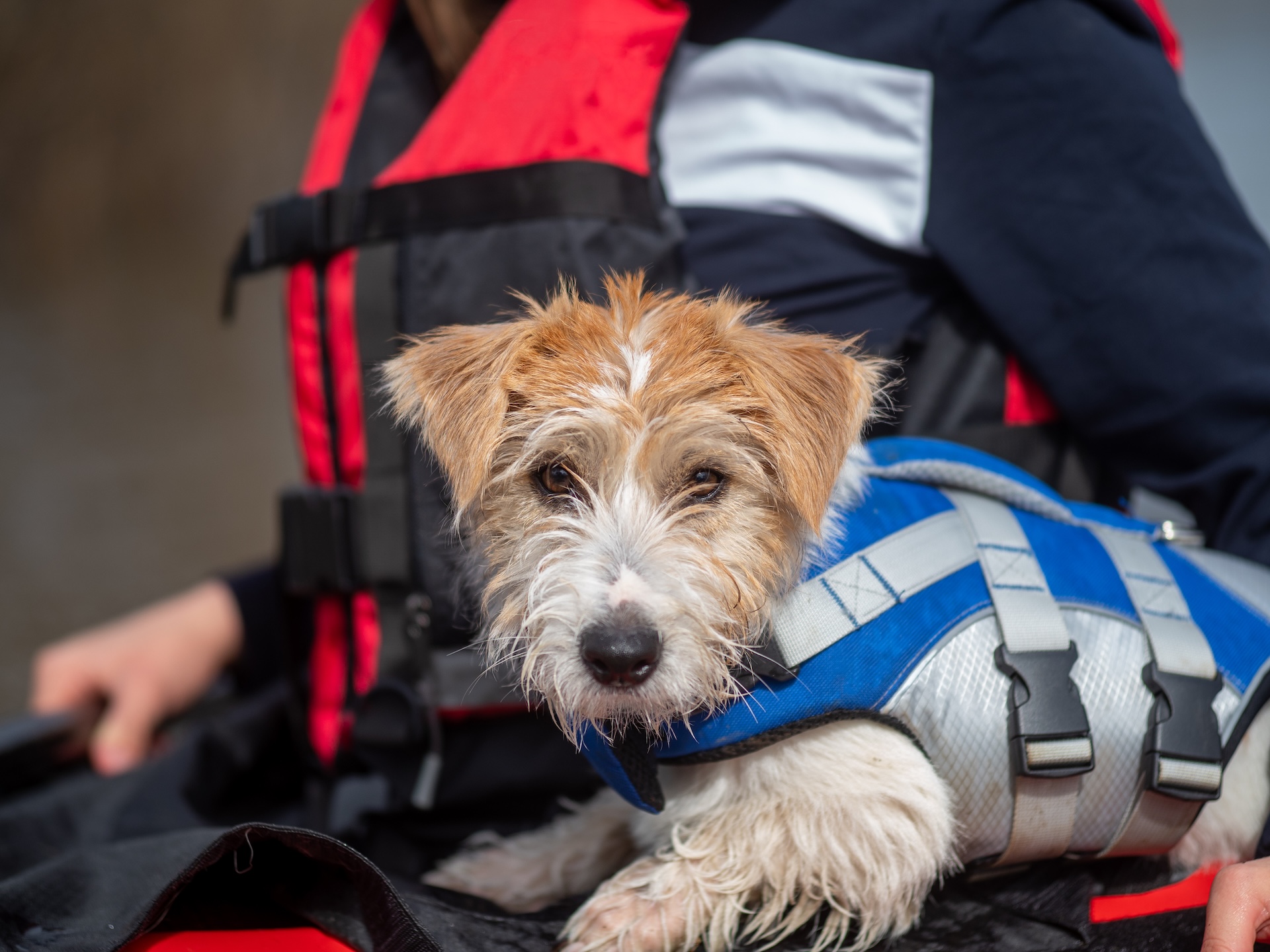
If Your Dog Gets a Stuck with a Fishing Hook
Fishing gear poses a real danger to dogs on boats, and they don't understand these risks like you do. If a hook gets embedded in their skin or mouth, resist the urge to pull it out. That's a common reflexive action but can easily cause more damage.
Make sure you keep your dog calm and still, as movement can push the hook deeper and make removing it more difficult. For shallow hooks, you can cut the barbed end with wire cutters and gently remove it from your pup. If the hook is deep, it's best to cover the area and take them to a vet as soon as possible.
Boating with a dog can lead to many memorable adventures, but knowing how to protect your dog from dangers like fishing gear can help both of you have a better experience.
If Your Dog Drinks Saltwater
Saltwater can cause dehydration, vomiting, and even poisoning. If your dog accidentally drinks salt water, give them fresh water to help dilute and flush out the excess salt.
Keep a close eye on them and watch for vomiting, diarrhea, or tremors. Their risk of health problems can depend on their overall size and the amount of saltwater they drank, but ensuring they're all right is always good.
If you notice symptoms or if those symptoms are getting worse, seek veterinary care.
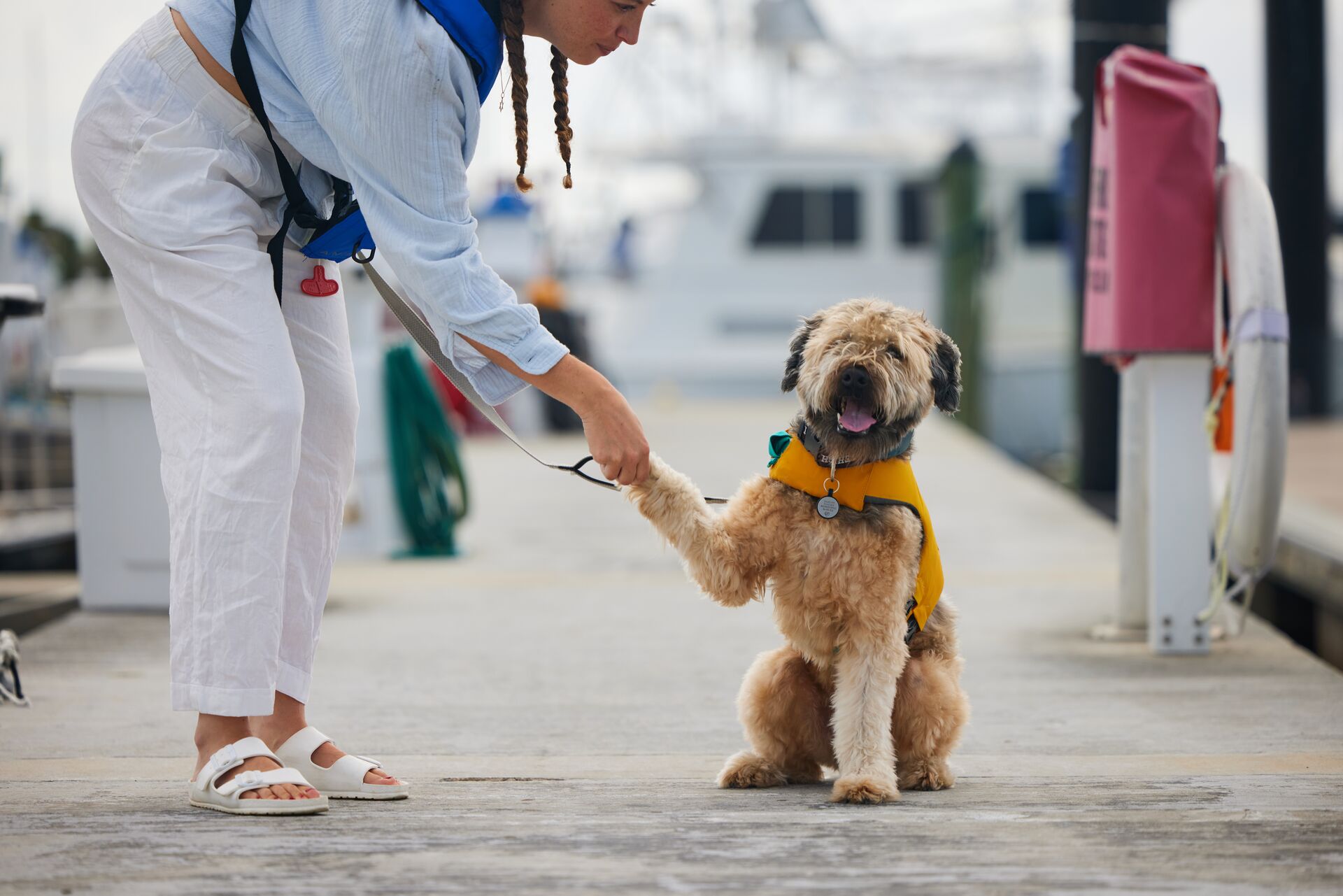
Protect Yourself and Your Pup With a Boater Education Course
Boating with a dog is a great way to spend the spring or summer, but make sure you do everything possible to keep them safe on the boat. The tips we shared today should help!
Before you take your four-legged friend out for a day on the water, make sure you've taken a boater education course. You'll learn about boating etiquette, navigation, and staying safe on the water to protect yourself, your pup, and other boaters. Plus, most states and provinces require boaters to pass a course before driving a motorized vessel.
Enjoy a safe boating season with your pup!
Choose the course for your state if you boat in the U.S., or take our course for Canadian boaters.

